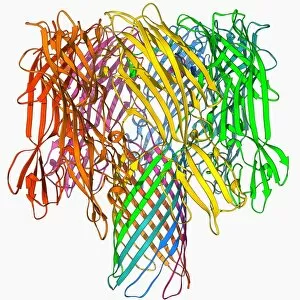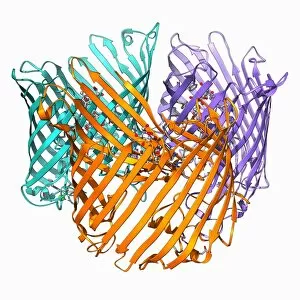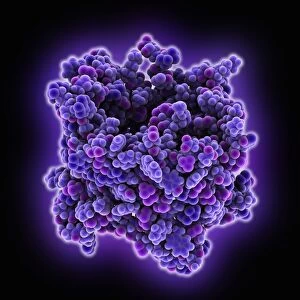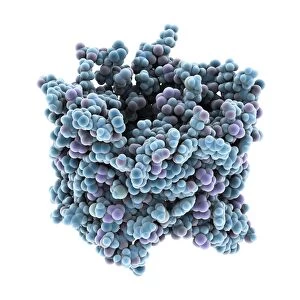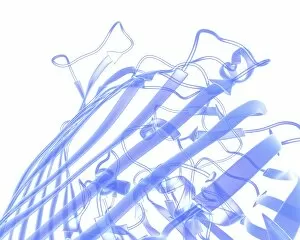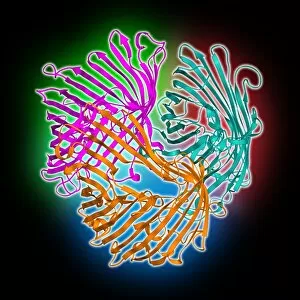Beta Barrel Collection
The beta barrel, a fascinating structural motif found in various proteins, plays a crucial role in the functioning of many biological systems
For sale as Licensed Images
Choose your image, Select your licence and Download the media
The beta barrel, a fascinating structural motif found in various proteins, plays a crucial role in the functioning of many biological systems. One such example is the Bacterial alpha-hemolysin toxin F006 / 9771, which utilizes this intricate arrangement to exert its harmful effects. Another remarkable instance is the Sucrose-specific porin molecule F006 / 9218, which employs the beta barrel architecture to facilitate selective transport of sucrose across bacterial membranes. This mechanism highlights how nature ingeniously exploits these protein structures for specific purposes. Furthermore, VDAC-1 ion channel protein C015 / 8250 and C015 / 8249 demonstrate the versatility of beta barrels as they form channels that regulate ion flow across cellular membranes. These vital channels are involved in numerous physiological processes and are essential for maintaining cellular homeostasis. In addition to their functional significance, beta barrels also contribute to the stability and integrity of bacterial outer membrane proteins. Multiple instances of these molecules (C014 / 4950, C014 / 4949) showcase how beta barrels serve as scaffolds for anchoring proteins on bacterial surfaces while providing protection against external threats. Lastly, we cannot overlook the involvement of beta barrels in Bacterial alpha-hemolysin toxin C015 / 7067. This particular variant demonstrates how variations within this structural motif can result in diverse functionalities within toxins produced by bacteria. Overall, these examples shed light on the immense importance and versatility of beta barrels in various biological contexts. Their unique structure allows them to perform diverse functions ranging from transportation and regulation to protection and toxicity – making them an intriguing subject for further exploration into understanding life's complexities at a molecular level.

